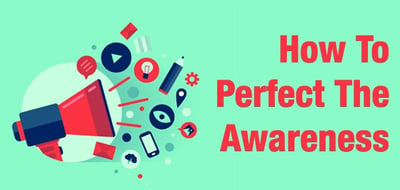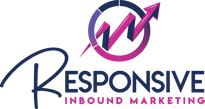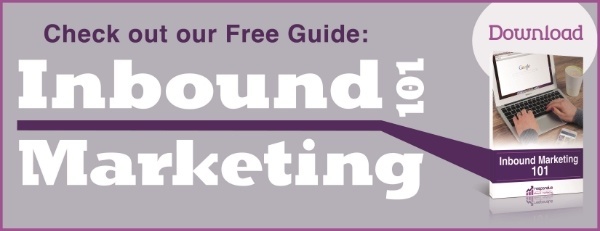5 Steps To Perfect The Awareness Stage
The awareness stage is an extremely crucial part of your inbound marketing strategy because it is what draws possible customers to your website so that you have a chance to offer your product to them. In order to do this though, you need to have a strong grasp on what to do during that first stage. Fear not, for we have researched and developed the top 5 most important ways to perfect the awareness stage.
1. Choose A Buyer Persona and Research Their Problems
That’s right, it’s time to stop running from problems and start searching them out. Begin by choosing one buyer persona and learn their likes and dislikes and their wants and needs. Each one of these aspect is necessary because they will help you determine what your specific buyer requires help with verses what they don’t need help with. Remember, the more you know about them, the more likely it is that you will be able to attract them to your offer. Also, you want to make sure you’re not wasting your time on a topic that doesn't concern your buyer. Say I ran a company that researched and developed parenting books. My buyer persona would be a parent who is constantly looking for parenting tips, but I need more specific information if I’m going to get them to read my content. After some research, I could determine that this particular buyer persona is in their twenties and is a new parent who struggles with things like putting their child to sleep. That is information I can use!
2. Determine How Your Product Can Resolve The Problem
Whew, all that research was a lot of work, but it was worth it because it will bring you another step closer to the perfect awareness stage. So you have this great product and you understand what the main issue your buyer persona is having. Now it’s time to develop that solution. ‘How’ is your best friend and partner in crime throughout this step. How will your product help this person? How would this person want to fix their issues? You need to be able to answer these questions before moving forward because it’s not enough to just understand the needs of your buyer persona, but you also need to be able to meet those needs. I understand looking for solutions is a bit harder than looking for problems, but you can do it! To help out let’s continue with our example. My product is parenting books so if I know that the main issue is that they're new to parenthood and are having basic issues like their child isn’t sleeping at night, I can determine what type of information I have on this issue and see that I have some great tips in my books for solving this problem. Great! Not only that, but I can provide different parenting styles that will approach this issue in a variety of ways. Awesome!
3. Create Short And Long Tail Terms
Now that you know your problem and solution, it’s time to start drawing that buyer persona in! Think about this, what do you do when you have a problem you need answered? You throw it into a search engine and click search of course! In order to use this to your advantage though, you need to make sure your content will show up in those search engines. That’s why you must develop your short and long tail keywords. The short tail keywords are there to catch a broader group of possible clients in your web, but the long tail keywords are specific enough to attract that buyer persona you’ve been studying. See, I told you all that research would pay off! You might wonder ‘how in the world am I going to come up with the right keywords?' Well guess what my friend, you’ve been creating them ever since your arms could reach the keyboard! Just put yourself in your buyer’s shoes and think about what you would type into a search engine if you where looking for broad answers as well as more specific answers. For my parenting books company, I would develop the short tail first by thinking about the problem in a broader sense. So my buyer wants an easy guide to getting their young child to sleep, but in a broader sense this could be construed as, “Tips for new parents”. To grow the long tail from this, we would tack on the specifics to form, “Baby sleeping tips for new parents”. There you have it! Two great keywords that will pop-up in search engines and draw both your specific buyer as well as a broader group to your page!
4. Write Blog Posts That Keep Your Reader Captivated
We have hooked the buyer and drawn them in, but wait, what have we drawn them to? The content that you create is a key aspect to perfect the awareness stage. If your content does not pertain to what the buyer’s issue is, then they will quickly move on to someone else’s page. Then you would have done all that work for nothing! So make sure your content has specifics that solve the buyer’s problem! The tone must also reflect the type of buyer who you know is reading your page. It can be whimsical or serious depending on who your audience is. Don’t forget to include those short and long tail keywords throughout your blog so that the link shows up in a variety of search engines! If I were to write a blog for my parenting book company after all the work I did prior to this step, I would create blog posts like “4 Reliable Baby Sleeping Tips For New Parents”. This is in relation to what the buyer wants to know and it also coincides with the product.
5. Create A Capturing CTA And Use It Effectively!
Finally we have hit step five! You have done your research, you have developed solutions, and you have created relatable content so now it’s time to bring it on home! CTAs are crucial at this stage. They are the portals to your product and the perfect awareness stage is all about getting your buyer to the point where they start to consider your product. Therefore, it’s important to create a capturing CTA and to use it in the most effective way possible. Make sure your CTA contains a product that’s related to your blog post. If I created a CTA at the end of a blog, which provided a link to an e-book for how a child’s schedule will resolve discourse, then that could draw the buyer farther into the website and therefore farther towards your product. Make sure it has a taste of the current blog post mixed with a step towards a different, but related aspect of your product. It should be located at the bottom of the page after all of the text so that the reader has a chance to consider it without forgetting about it. We all have those moments where we aim to do something, but get sidetracked by something else and totally forget what we originally wanted to do. I can't confirm it, but I'm pretty sure I spend half my life walking into a room for one thing, only to come out with something totally different. Don't let this happen with your buyers! Also, write a sentence that will lead your buyer into your CTA. An example of that would be, “Now that you are an expert in putting your child to bed, check out our e-book on how to create an effective schedule for your child”. It is related to your blog, but still brings them somewhere new, which can be intriguing for the buyer.
Congratulations! You have made it through the 5 steps to perfect the awareness stage and are now on to gaining more leads and clientele! Remember, as long as you pick a buyer persona, do your research on their needs, provide an answer to their problems, allow them to find this answer, provide strong and relative content, and develop an effective CTA, you will be successful!
For more tips and tricks on perfecting the stages of inbound marketing, check out our free e-book today!


